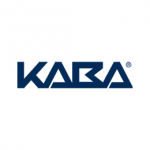
Ten principles of good design
August 4, 2013For over 3 decades, German industrial designer Dieter Rams was Braun’s Chief Design Officer, responsible for the style of a wide range of Braun products, from open reel tape decks to shavers. He even designed the Braun logo.
He often stated “Less, but better”.
As an advocate of the Functionalist School of industrial design, Rams believed that the design a of product should be based on its purpose. The aesthetics would reflect the product’s simplicity and functionality.
He was prolific in his production of exceptional designs, including: audio/visual equipment, radios, coffee makers, calculators, consumer appliances and office products, many which have become recognised classics.
Amongst these is the minimalist, Cylindric T 2 lighter (1968) and Braun Phonosuper SK 4 record player. Dieter Rams and Hans Gugelot designed this product with an innovative clear Plexiglass lid, which displayed its function and prompted the name “Snow White’s Coffin”.
Wunderkind Apple designer Jonathan Ive admired Rams, and remembered vividly his first encounter as a young boy with a Rams designed Braun MPZ 2 Citromatic juicer. “The surfaces were without apology, bold, pure, perfectly-proportioned, coherent and effortless.”
Some of Ive’s designs pay a clear tribute to Rams work. The elegant simplicity and circular control of the Ive designed iPod Mini (2004), echoes the Braun T3 pocket transistor radio, designed by Dieter Rams in 1958.
In the 1970s, Rams introduced the idea of sustainable development, and the concept that obsolescence is a crime in design. In asking himself the question “Is my design good design?”, he formulated his now celebrated ten principles.
Good design:
- Is innovative – The possibilities for progression are not, by any means, exhausted. Technological development is always offering new opportunities for original designs. But imaginative design always develops in tandem with improving technology, and can never be an end in itself.
- Makes a product useful – A product is bought to be used. It has to satisfy not only functional, but also psychological and aesthetic criteria. Good design emphasizes the usefulness of a product whilst disregarding anything that could detract from it.
- Is aesthetic – The aesthetic quality of a product is integral to its usefulness because products are used every day and have an effect on people and their well-being. Only well-executed objects can be beautiful.
- Makes a product understandable – It clarifies the product’s structure. Better still, it can make the product clearly express its function by making use of the user’s intuition. At best, it is self-explanatory.
- Is unobtrusive – Products fulfilling a purpose are like tools. They are neither decorative objects nor works of art. Their design should therefore be both neutral and restrained, to leave room for the user’s self-expression.
- Is honest – It does not make a product appear more innovative, powerful or valuable than it really is. It does not attempt to manipulate the consumer with promises that cannot be kept.
- Is long-lasting – It avoids being fashionable and therefore never appears antiquated. Unlike fashionable design, it lasts many years – even in today’s throwaway society.
- Is thorough down to the last detail – Nothing must be arbitrary or left to chance. Care and accuracy in the design process show respect towards the consumer.
- Is environmentally friendly – Design makes an important contribution to the preservation of the environment. It conserves resources and minimizes physical and visual pollution throughout the lifecycle of the product.
- Is as little design as possible – Less, but better – because it concentrates on the essential aspects, and the products are not burdened with non-essentials. Back to purity, back to simplicity.
In 1980, American inventor and designer Buckminster Fuller stated, “When I’m working on a problem, I never think about beauty. I think only how to solve the problem. But when I have finished, if the solution is not beautiful, I know it is wrong.”
This philosophy applies equally to conveying ideas as to products. Often, when designing an app, writing copy, producing a print ad, framing a photograph or planning a video, the most important decisions are those on what to leave out.
Restraint takes courage, but the best results derive from eliminating the extraneous to reveal the essence.
As Steve Jobs said, “Design is not just what it looks like and feels like. Design is how it works.”
Reference:
To learn a more of Dieter Rams thinking, read his Designboom interview
To learn a more of Jonathan Ive, read his Design Museum interview
Books:
Less and More: The Design Ethos of Dieter Rams edited by Klaus Klemp and Keiko Ueki-Polet, published by Gestalten. ISBN: 9783899552775.
As Little Design As Possible: The Work of Dieter Rams by Sophie Lovell, published by Phaidon. ISBN: 9780714849188
Sources:
View some of these designs in Pinterest.com
Dieter Rams portrait
Braun logo structure
Braun TG 60 ‘open reel’ tape recorder
Braun RT 20 ’tischsuper’ tube radio
Braun SK 4 ‘phonosuper’ record player
Braun T3 pocket transistor radio
Braun T2 cylindric cigarette lighter
Braun MPZ 2 Citromatic juicer
industrial design
From Our Clients


Working with this team has been a delight and the resulting website far exceeds our expectations. All stages of the process were handled professionally, promptly and creatively. Discussions went smoothly, with flawless communication and suitable and sensible solutions whenever issues were raised. Time frames were either met or delivered early. The site was 100% accurate, indicating impressive attention to detail.
Without exception, the feedback on our site has been outstanding - clear and thoughtful layout, appropriate and interesting graphics and intuitive navigation.


Thank you for the development of an updated brand image for Wah Yuet in China.
While originally contracted to produce a video highlighting Wah Yuet's manufacturing capabilities, it was apparent very quickly that your understanding of our requirements, combined with your experience, were the perfect fit to create a new logo and style guidelines for the company. While relatively small in scope, you were dedicated to the success of the project and I am pleased to say that you hit the bullseye!


I happily recommend Andrew and the Digital Tsunami team.
I have dealt with many web marketing and support companies over the years, and have been very impressed with Digital Tsunami's response, advice and understanding of their field. I recommend talking to Andrew about your next web project.


Andrew helped us to see the potential of video in bringing our new website to life.
He held our hand through the process, making it as undaunting as possible.
He delivered a great selection of videos (from a one-day shoot), that really tell the Foodbank story and will be a great addition to our communications.


Andrew and his team have supported Foodbank by providing web services for more than a decade.
In fact, they have just undertaken the first complete redevelopment of the original Foodbank website they built for us, and have been maintaining so ably since.
Andrew is creative and passionate and helps us to keep up, constantly looking for new ways to add value and improve our online communications channels.